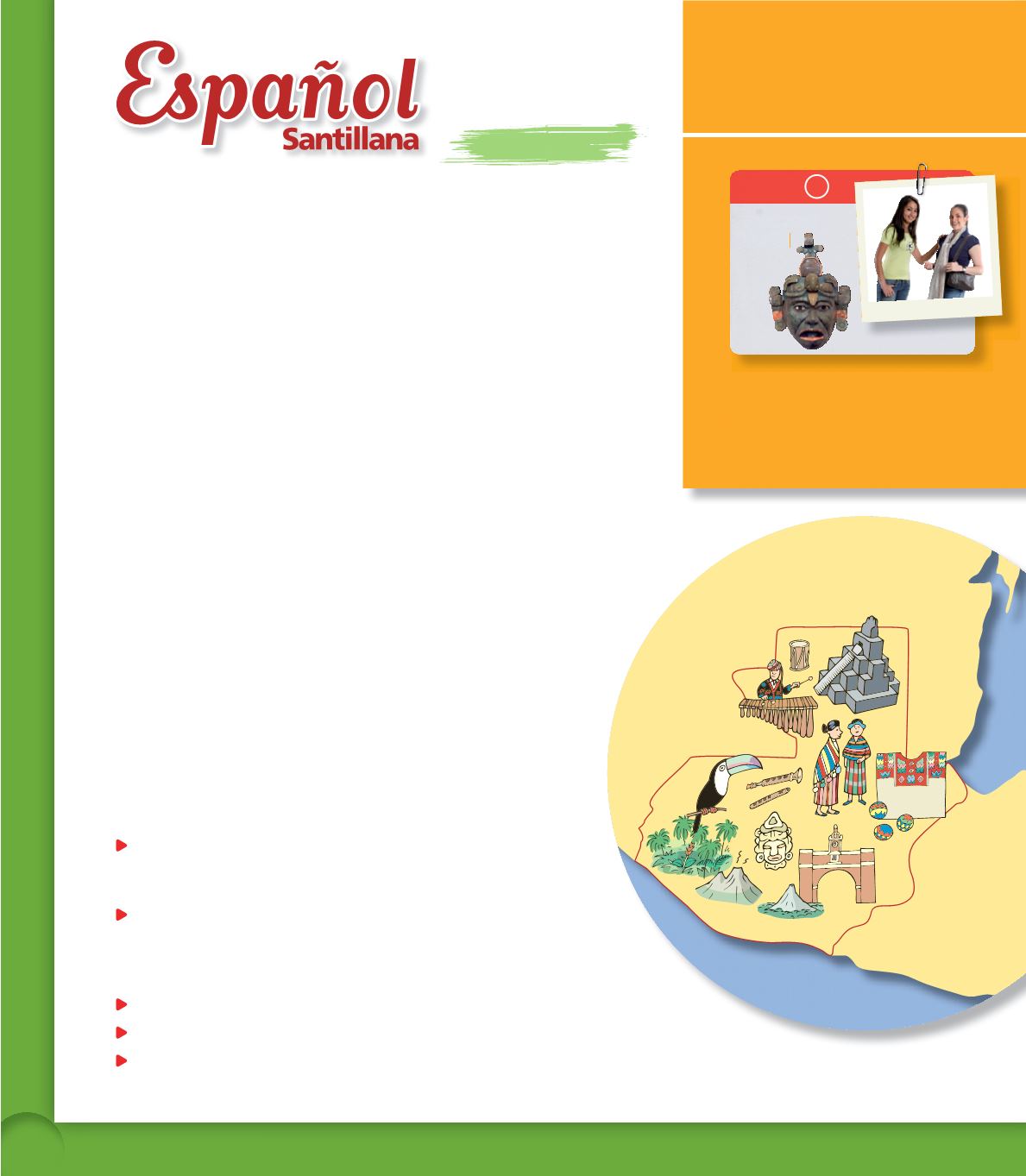

Unit Overview
6
T8
2.
The integration of culture
into the units
1. Culture is the framework for learning
Spanish.
Culture is present throughout the unit: in the challenges, in the boxes that
feature the five Cs of language learning, in the section titled
Mapa cultural
,
in the readings, and in the final project.
Culture is also present in the practice activities: students analyze the cultural
perspectives, practices, and products of a country or cultural area, compare it
with their own country, and transfer what they have learned to their own reality.
2. Culture is presented in an original way.
Each challenge features a
cultural element
related to the theme of the u
For example,
Desafío 1
in Guatemala (Level 1) showcases an element of
traditional Guatemalan culture: jade masks.
Elements of the culture related to the theme of the unit are also present
in an organized way in the
Mapa cultural
section.
3. Culture is recognized in all its richness.
Culture is explored as a perspective, a practice, and a product. For
example, students reflect about the festivals, customs, traditions, family
dynamics, table manners, courtesy expressions, dances, foods, etc.
Culture is exhibited from a variety of angles:
Major cities such as Mexico City, San Juan in Puerto Rico, Antigua
in Guatemala, Santo Domingo, Cartagena de Indias, Buenos Aires,
Seville, etc.
Archeology, architecture, and the fine arts: Teotihuacan, Tikal,
Machu Picchu, the Zócalo in Mexico City, the El Morro fortress in San J
the Alhambra, Frida Kahlo, Diego Rivera, Pablo Picasso, Fernando
Botero, etc.
Customs such as festivals, traditional clothing, foods, and sports.
Youth culture, such as music and fashion.
Social relationships and societal organization.
La máscara
de jade
DESAFÍO
1
Diana y Rita
Find a jade mask in Antigua.
uan,
nit.
ed
Guatemala
Key Ideas


















